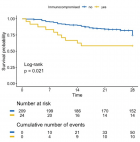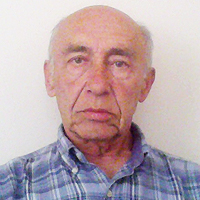Abstract
Research Article
Comparison of Efficacy and Safety of Hydroxychloroquine and Teneligliptin in Type 2 Diabetes Patients who are Inadequately Controlled with Glimepiride, Metformin and Insulin therapy: A Randomized Controlled Trial with Parallel Group Design
Prakash Ranjan, Sajjad Ahsan*, Rabi Bhushan, Bipin Kumar, Tushar, Anup Kumar Gupta, Anand Kumar Verma and Mukesh Jain
Published: 13 September, 2018 | Volume 2 - Issue 1 | Pages: 033-040
Aim: The aim of the present study is to assess the efficacy and safety of Hydroxychloroquine in comparison with Teneligliptin in type 2 diabetes patients whose blood glucose levels were inadequately controlled with metformin, Glimepiride and insulin therapy.
Methods: This was a randomized, prospective, parallel-group, experimental trial done in 300 Type 2 Diabetes patients who were uncontrolled (HbA1c=7.5–10%) with metformin, Glimepiride and insulin therapy. Patients were randomly divided into two groups one received Teneligliptin 20 mg (n=152) and other received Hydroxychloroquine 400 mg (n=148) while continuing insulin therapy with other 2 OHA. Insulin doses were adjusted to maintain normal blood glucose levels.
Result: The adjusted mean change from baseline to endpoint in HbA1c was −1.2±0.5% in patient group receiving Hydroxychloroquine and −0.9±0.5% in patients group receiving Teneligliptin, respectively, with a significant between-treatment difference (p<0.001). The incidence of adverse events was similar in the Hydroxychloroquine (72%) and Teneligliptin (77%) groups. However, hypoglycaemic events were less common (p<0.001) and less severe (p<0.05) in patients receiving Hydroxychloroquine than in those receiving Teneligliptin.
Conclusion: Hydroxychloroquine decreases HbA1c in patients whose type 2 diabetes is poorly controlled with high doses of insulin as compare to Teneligliptin. Addition of hydroxychloroquine to insulin therapy is also associated with reduced incidence of confirmed and severe hypoglycaemia.
Read Full Article HTML DOI: 10.29328/journal.acem.1001009 Cite this Article Read Full Article PDF
Keywords:
Hydroxychloroquine; Teneligliptin; Insulin; Type 2 Diabetes; HbA1c
References
- Nathan DM, Cleary PA, Backlund JY, Genuth SM, Lachin JM, et al. Intensive diabetes treatment and cardiovascular disease in patients with type 1 diabetes. N Engl J Med. 2005; 353: 2643-2653. Ref.: https://goo.gl/tNvjBX
- Bergenstal RM, Johnson M, Powers MA, Wynne A, Vlajnic A, et al. Adjust to target in type 2 diabetes: comparison of a simple algorithm with carbohydrate counting for adjustment of mealtime insulin glulisine. Diabetes Care. 2008; 31: 1305-1310. Ref.: https://goo.gl/GTm5gb
- Inzucchi SE, Bergenstal RM, Buse JB, Diamant M, Ferrannini E, et al. Management of hyperglycaemia in type 2 diabetes: a patient-centered approach: position statement of the American Diabetes Association (ADA) and the European Association for the Study of Diabetes (EASD). Diabetologia. 2012; 55: 1577-1596. Ref.: https://goo.gl/tUCDCC
- Donner T, Munoz M. Update on insulin therapy for type 2 diabetes. J Clin Endocrinol Metab. 2012; 97: 1405–1413. Ref.: https://goo.gl/sTivNH
- Kishimoto M. Teneligliptin: a DPP-4 inhibitor for the treatment of type 2 diabetes. Diabetes Metab Syndr Obes. 2013; 6: 187–195. Ref.: https://goo.gl/MxuEBg
- Tsuchimochi W, Ueno H, Yamashita E, Tsubouchi C, Sakoda H, et al. Teneligliptin improves glycemic control with the reduction of postprandial insulin requirement in Japanese diabetic patients”. Endocr J. 2015; 62: 13-20. Ref.: https://goo.gl/YPbJth
- Ghosh S, Trivedi S, Sanyal D, Modi KD, Kharb S. Teneligliptin real-world efficacy assessment of type 2 diabetes mellitus patients in India (TREAT- INDIA Study). Diabetes Metab Syndr Obes. 2016; 9: 347-353. Ref.: https://goo.gl/vJeUqd
- Scott LJ. Teneligliptin; a review in type 2 diabetes. Clin Drug Investig. 2015; 35: 765-772. Ref.: https://goo.gl/2RcsJh
- Kim MK, Rhee EJ, Han KA, Woo AC, Lee MK, et al. Efficacy and safety of teneligliptin: a dipeptidyl peptidase 4 inhibitor, combined with metformin in Korean patients with type 2 diabetes mellitus: a 16-week, randomized, double-blind, placebo-controlled phase III trial. Diabetes Obes Metab. 2015; 17: 309–312. Ref.: https://goo.gl/no1fnN
- Pareek A, Chandurkar N, Thomas N, Viswanathan V, Deshpande A, et al. Efficacy and safety of hydroxychloroquine in the treatment of type 2 diabetes mellitus: a double blind, randomized comparison with pioglitazone. 2014; 30: 1257–1266. Ref.: https://goo.gl/MKEc1g
- Quatraro A, Consoli G, Magno M, Caretta F, Nardozza A, et al. Hydroxychloroquine in decompensated, treatment-refractory noninsulin-dependent diabetes mellitus. a new job for an old drug? Ann Intern Med 1990; 112: 678–681. Ref.: https://goo.gl/1NE9ET
- Baidya A, Chakravarti HN, Saraogi RK, Gupta A, Ahmed R, et al. Efficacy of Maximum and Optimum Doses of Hydroxychloroquine Added to Patients With Poorly Controlled Type 2 Diabetes on Stable Insulin Therapy along with Glimepiride And Metformin: Association of High-Sensitive C-Reactive Protein (Hs-CRP) and Glycosylated Haemoglobin (HbA1c). Endocrinol Metab Syndr. 2018; 7: 283. Ref.: https://goo.gl/UL29JC
- Jagnani VK, Bhattacharya NR, Satpathy SC, Hasda GC, Chakraborty S. Effect of Hydroxychloroquine on Type 2 Diabetes Mellitus Unresponsive to More Than Two Oral Antidiabetic Agents. J Diabetes Metab. 2017; 8: 771. Ref.: https://goo.gl/e6LbQG
- Baidya A, Kumar M, Pathak SK, Ahmed R. Study of comparative effect of hydroxychloroquine and vildagliptin on glycaemic efficacy and HbA1c in type 2 diabetes patients who were inadequately controlled with metformin and glimepiride dual therapy; JMSCR. 2018; 6: 409-415. Ref.: https://goo.gl/qmhJhd
- Sing SP, Sinha MK, Alok KA, Ranjan R. Comparative Study to Evaluate Effect of Hydroxychloroquine Versus Sitagliptin as Add on Therapy in Patients with Type 2 Diabetes Inadequately Controlled on Combination with Metformin and Gliclazide: A Multicenter, Observational Trial. Sch J App Med Sci. 2018; 6: 2150-2156
- Meneilly GS, Elliott T, Tessier D, Hards L, Tildsesley H. NIDDM in the elderly. Diabetes Care. 1996; 19: 1320–1325. Ref.: https://goo.gl/Zt5YQ8
- Yang SH, Dou KF, Song WJ. Prevalence of diabetes among men and women in China. N Engl J Med. 2010; 362: 2425–2426. https://goo.gl/fbvMDf
- Nathan DM, Buse JB, Davidson MB, Heine RJ, Holman RR, et al. Management of hyperglycaemia in type 2 diabetes: a consensus algorithm for the initiation and adjustment of therapy. A consensus statement from the American Diabetes Association and the European Association for the Study of Diabetes. Diabetologia. 2006; 49: 1711–1721. Ref.: https://goo.gl/SpbEMH
- Hepburn DA, MacLeod KM, Pell AC, Scougal IJ, Frier BM. Frequency and symptoms of hypoglycaemia experienced by patients with type 2 diabetes treated with insulin. Diabet Med. 1993; 10: 231–237. Ref.: https://goo.gl/yuE9gT
Figures:

Figure 1

Figure 2
Similar Articles
-
Diabetes and red blood cell parametersMd. Sadikuj Jaman*,Md. Sohanur Rahman,Rubaiya Rafique Swarna,Joyanto Mahato,Md. Milon Miah,Mosa. Ayshasiddeka. Diabetes and red blood cell parameters. . 2018 doi: 10.29328/journal.acem.1001004; 2: 001-009
-
Exercise preserves pancreatic β-cell mass and function in obese OLETF ratsJiawei Zhao,Zhihong Yang,Min He,Qinghua Wang,Renming Hu*. Exercise preserves pancreatic β-cell mass and function in obese OLETF rats. . 2018 doi: 10.29328/journal.acem.1001007; 2: 022-029
-
Comparison of Efficacy and Safety of Hydroxychloroquine and Teneligliptin in Type 2 Diabetes Patients who are Inadequately Controlled with Glimepiride, Metformin and Insulin therapy: A Randomized Controlled Trial with Parallel Group DesignPrakash Ranjan,Sajjad Ahsan*,Rabi Bhushan,Bipin Kumar,Tushar,Anup Kumar Gupta,Anand Kumar Verma,Mukesh Jain. Comparison of Efficacy and Safety of Hydroxychloroquine and Teneligliptin in Type 2 Diabetes Patients who are Inadequately Controlled with Glimepiride, Metformin and Insulin therapy: A Randomized Controlled Trial with Parallel Group Design. . 2018 doi: 10.29328/journal.acem.1001009; 2: 033-040
-
Could metabolic risk factors contribute to the development of cervical cancer?Maydelín Frontela-Noda*,Eduardo Cabrera-Rode,Maite Hernández-Menéndez,Raquel Duran-Bornot. Could metabolic risk factors contribute to the development of cervical cancer?. . 2019 doi: 10.29328/journal.acem.1001011; 3: 001-006
-
Risk Factors Associated to Patients with Type 2 Diabetes in Lahore DistrictSnobia Munir*,Samreen Riaz,Tooba Arshad,Aasma Riaz. Risk Factors Associated to Patients with Type 2 Diabetes in Lahore District. . 2020 doi: 10.29328/journal.acem.1001014; 4: 011-019
-
Evaluation of endothelial function in obese children and adolescentsHacer Efnan Melek,Ayça Törel Ergür*,Gökçe Kaan Ataç. Evaluation of endothelial function in obese children and adolescents. . 2021 doi: 10.29328/journal.acem.1001019; 5: 014-023
-
Metabolic syndrome: A case reportDragan Klaric,Marta Martinis*,Marta Klaric. Metabolic syndrome: A case report. . 2021 doi: 10.29328/journal.acem.1001022; 5: 031-035
-
Effective treatment of diabetes mellitus and autoimmune diseases by resonance medicinePraznikov Victor*. Effective treatment of diabetes mellitus and autoimmune diseases by resonance medicine. . 2022 doi: 10.29328/journal.acem.1001024; 6: 004-009
-
Effects of dietary supplementation on progression to type 2 diabetes in subjects with prediabetes: a single center randomized double-blind placebo-controlled trialSathit Niramitmahapanya*,Preeyapat Chattieng,Tiersidh Nasomphan,Korbtham Sathirakul. Effects of dietary supplementation on progression to type 2 diabetes in subjects with prediabetes: a single center randomized double-blind placebo-controlled trial. . 2023 doi: 10.29328/journal.acem.1001026; 7: 00-007
Recently Viewed
-
A possible Etiology and new treatment of Burning Mouth Syndrome and allied conditionSudhakar Pattanaik*. A possible Etiology and new treatment of Burning Mouth Syndrome and allied condition. Adv Treat ENT Disord. 2017: doi: 10.29328/journal.ated.1001001; 1: 001-005
-
Changes in the frequency and intensity of Tinnitus using the Suppressive Noise SpectrumMing Zhang*,Alysia Jeske,Sarah Young. Changes in the frequency and intensity of Tinnitus using the Suppressive Noise Spectrum. Adv Treat ENT Disord. 2017: doi: 10.29328/journal.ated.1001002; 1: 006-012
-
Practical implementation of the SWEEP-session of Stimulation-Registration in CI fittingPetrov SM*. Practical implementation of the SWEEP-session of Stimulation-Registration in CI fitting. Adv Treat ENT Disord. 2017: doi: 10.29328/journal.ated.1001003; 1: 013-015
-
For professionals working on the topic of cochlear implantation: Opinions of readers of “Instruction” and participants of MIMICPetrov SM*. For professionals working on the topic of cochlear implantation: Opinions of readers of “Instruction” and participants of MIMIC. Adv Treat ENT Disord. 2018: doi: 10.29328/journal.ated.1001004; 2: 001-005
-
Recent advances in pathophysiology and management of subglottic HemangiomaMohamed Khamis Tolba Mahmoud Abdalla*. Recent advances in pathophysiology and management of subglottic Hemangioma. Adv Treat ENT Disord. 2018: doi: 10.29328/journal.ated.1001005; 2: 006-007
Most Viewed
-
Impact of Latex Sensitization on Asthma and Rhinitis Progression: A Study at Abidjan-Cocody University Hospital - Côte d’Ivoire (Progression of Asthma and Rhinitis related to Latex Sensitization)Dasse Sery Romuald*, KL Siransy, N Koffi, RO Yeboah, EK Nguessan, HA Adou, VP Goran-Kouacou, AU Assi, JY Seri, S Moussa, D Oura, CL Memel, H Koya, E Atoukoula. Impact of Latex Sensitization on Asthma and Rhinitis Progression: A Study at Abidjan-Cocody University Hospital - Côte d’Ivoire (Progression of Asthma and Rhinitis related to Latex Sensitization). Arch Asthma Allergy Immunol. 2024 doi: 10.29328/journal.aaai.1001035; 8: 007-012
-
Causal Link between Human Blood Metabolites and Asthma: An Investigation Using Mendelian RandomizationYong-Qing Zhu, Xiao-Yan Meng, Jing-Hua Yang*. Causal Link between Human Blood Metabolites and Asthma: An Investigation Using Mendelian Randomization. Arch Asthma Allergy Immunol. 2023 doi: 10.29328/journal.aaai.1001032; 7: 012-022
-
An algorithm to safely manage oral food challenge in an office-based setting for children with multiple food allergiesNathalie Cottel,Aïcha Dieme,Véronique Orcel,Yannick Chantran,Mélisande Bourgoin-Heck,Jocelyne Just. An algorithm to safely manage oral food challenge in an office-based setting for children with multiple food allergies. Arch Asthma Allergy Immunol. 2021 doi: 10.29328/journal.aaai.1001027; 5: 030-037
-
Snow white: an allergic girl?Oreste Vittore Brenna*. Snow white: an allergic girl?. Arch Asthma Allergy Immunol. 2022 doi: 10.29328/journal.aaai.1001029; 6: 001-002
-
Cytokine intoxication as a model of cell apoptosis and predict of schizophrenia - like affective disordersElena Viktorovna Drozdova*. Cytokine intoxication as a model of cell apoptosis and predict of schizophrenia - like affective disorders. Arch Asthma Allergy Immunol. 2021 doi: 10.29328/journal.aaai.1001028; 5: 038-040

If you are already a member of our network and need to keep track of any developments regarding a question you have already submitted, click "take me to my Query."
















































































































































